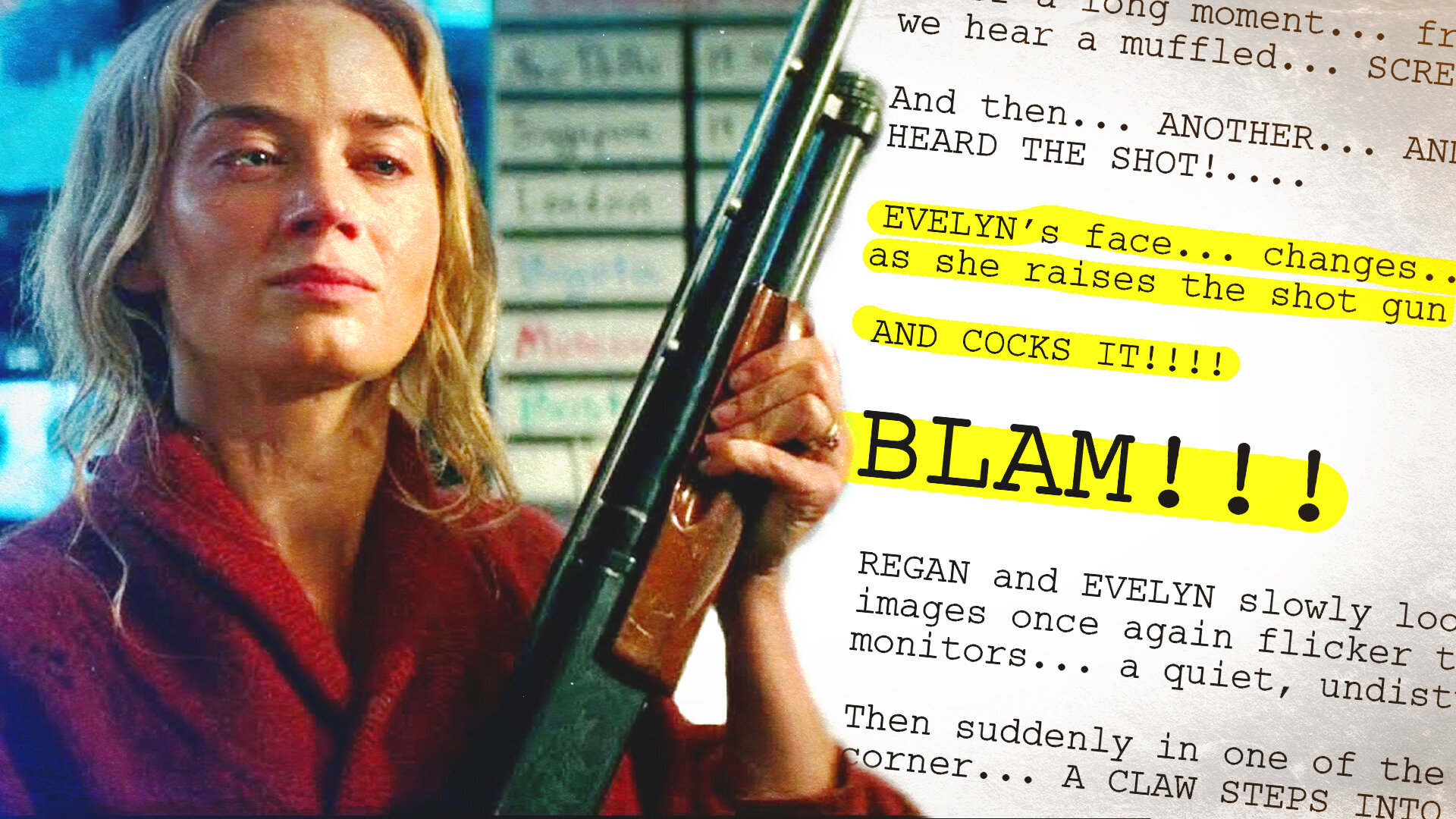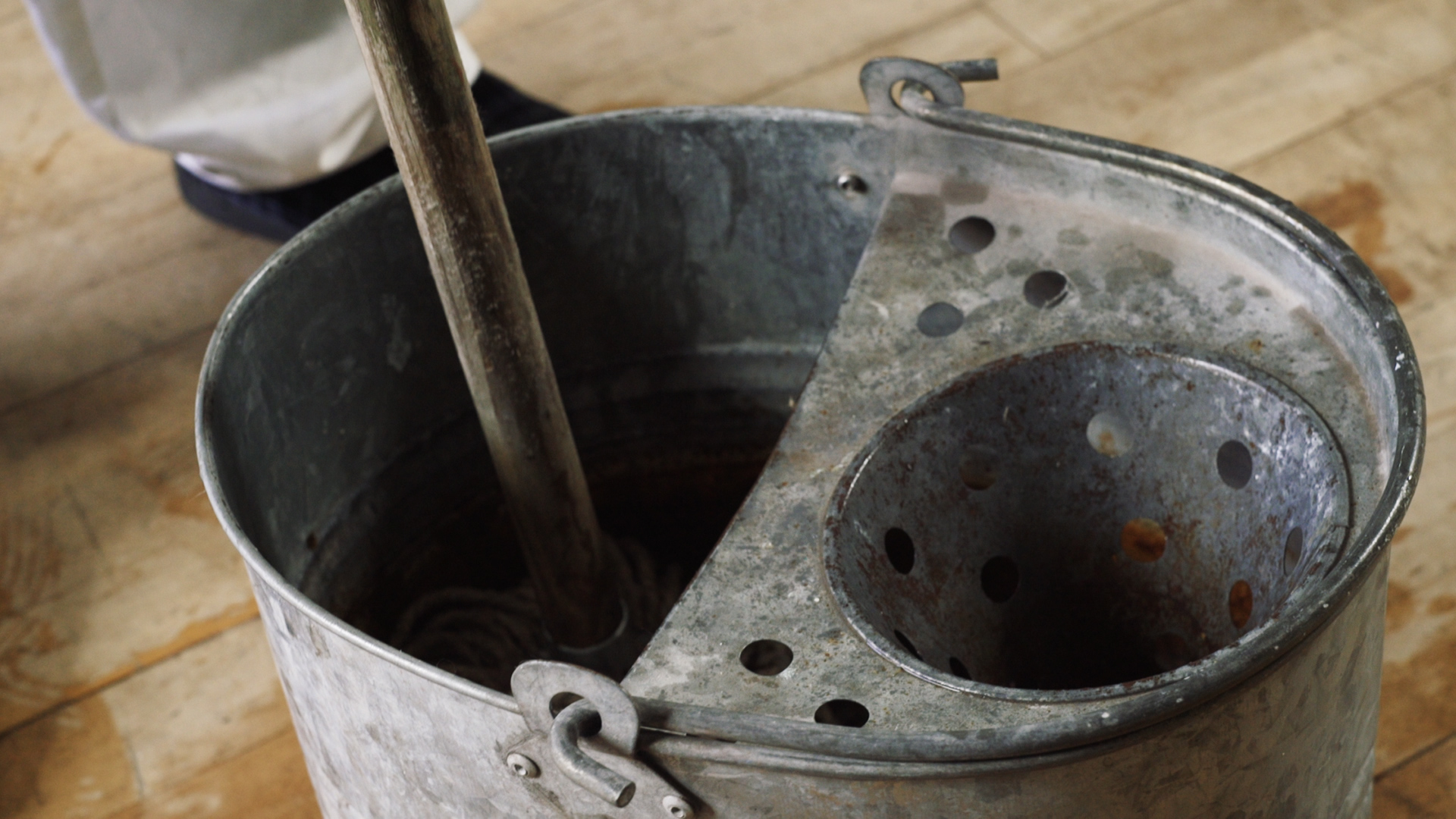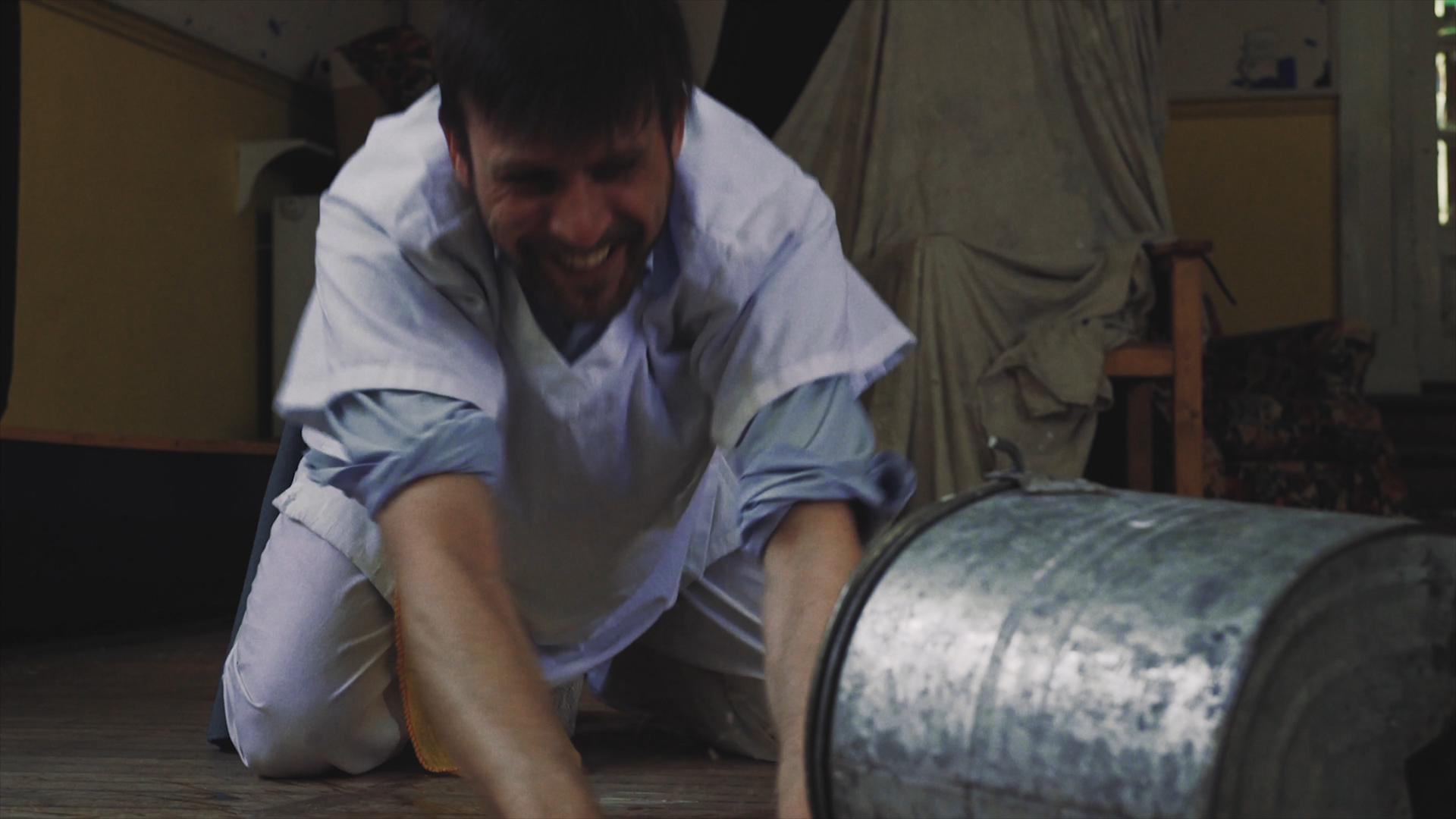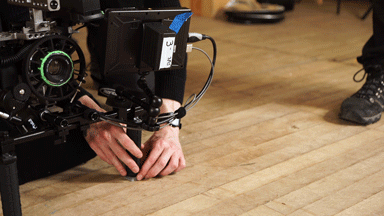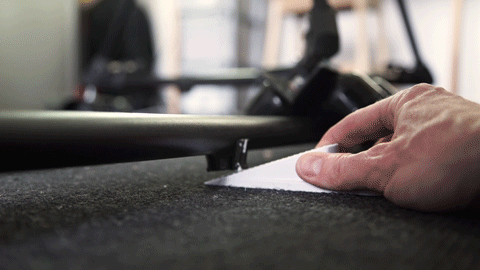The shots YOU use in your film aren’t just there to look fancy. Your shots convey the story on screen, and by giving your shots REASON and MOTIVATION, you can get a step closer to achieving the film look.
We’re breaking down how we applied reason and motivation to the shots in our latest film The Asylum Groove, you can watch it right here:
One thing we wanted to do with The Asylum Groove was give the camera characteristics. This way we could apply reason and motivation to every shot and try to tell the story as if the camera was alive.
So we thought of the camera as a really curious child. They have stumbled into an intriguing situation and throughout the scene they will want to learn more.
This curious child will be trying to soak up all the important information in the scene and will be giving it back to the audience as entertainment.
Our character Sam has decided to lift his mop and dance to the music. But the camera stays in place. Our reasoning for this movement, or lack of movement, is because his dancing starts very suddenly.
The camera, AKA the curious child, is surprised by what is happening. They stay still and watch as they try to figure out this new piece of information. Sam dances backwards, distancing himself from the curious child. So what does the camera want to do? Get closer.
Then we cut to a close up of the character. This is needed to clearly see the new expression of love and compassion on his face, a key emotional beat in the sequence. It is motivated by the curious child wanting to find out more about our character.
As humans we tend to read people’s facial expressions, so when there isn’t a lot of BIG information in the scene, we read the MICRO information.
The next big camera move compliments the two previous shots.
This time the curious child knows the character is about to resume dancing. The camera is intrigued and is now invested in the situation. The next shot cuts t o a wide, but this time the curious child follows along with the movement of the character and physically moves forward in order to get another look on his face.
All of the shots in the Asylum Groove follow this process of the curious child. You can make your shots even more interesting by thinking of the child as someone who doesn’t always tell the truth and doesn’t always want to tell you everything straight away.
The entire beginning sequence of the film is shot with close up inserts, mostly of details, hinting story elements without outright displaying them. In this case, the curious child has joined the scene BEFORE the audience and is slowly giving clues, teasing the audience with small chunks of information.
At the end, when we find out Sam is being electrocuted, the camera is confused. The curious child has just been transported to this new scene all of a sudden, so they are initially looking around their environment to figure out what is going on.
Once the camera understands the situation, and is faced with our character Sam RAGING on screen, it distances itself from him and the disturbing scene, pulling back, and ending in a wide shot.
Your shots should have a place in the story. Instead of just shooting coverage, try to find the emotional or dramatic beats in the scene and bring the audience along for the journey - after all, the curious child is dictating what the audience can see. If the camera isn’t interested in the scene, why should the audience even pay attention?
This video was Sponsored By
🚀 http://bit.ly/pack-emulsion - Make your video look like it was tailor-made for the silver screen with RocketStock’s film grain overlay pack, Emulsion!
🎵 http://bit.ly/pbtfl-wildestdreams - Click here to download this episode's track. Check out Premiumbeat.com to discover a huge range of exclusive royalty free music!
DISCLAIMERS:
Some of these links are affiliate links, if you purchase gear via these links The Film Look will receive a small commission, but there will be no additional cost to you. Thank you!
